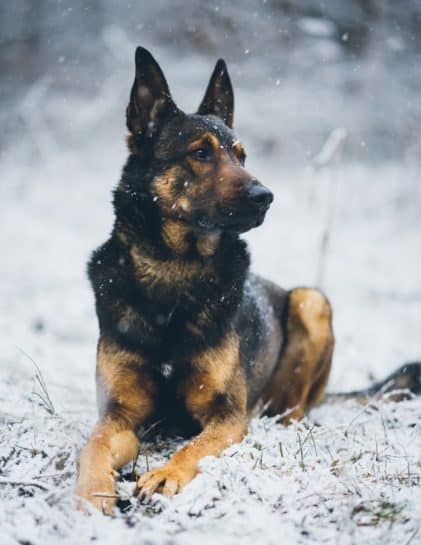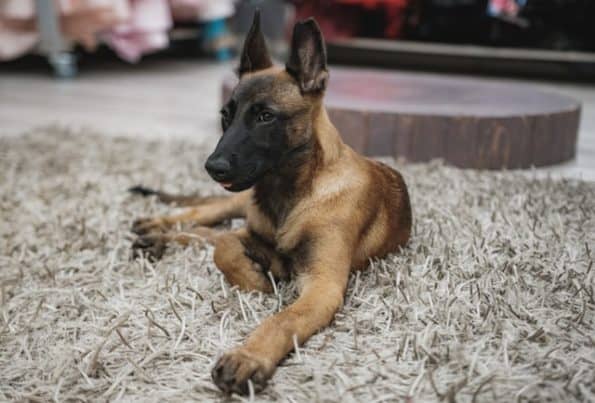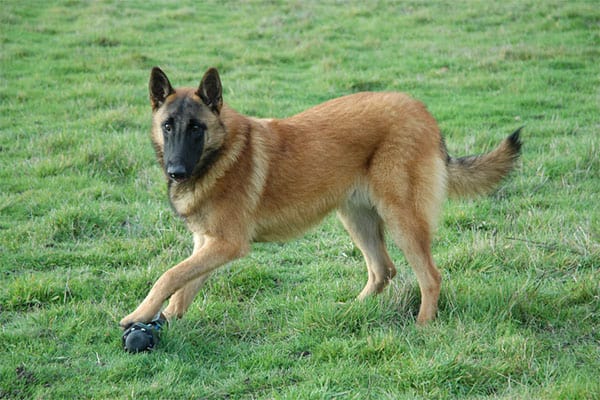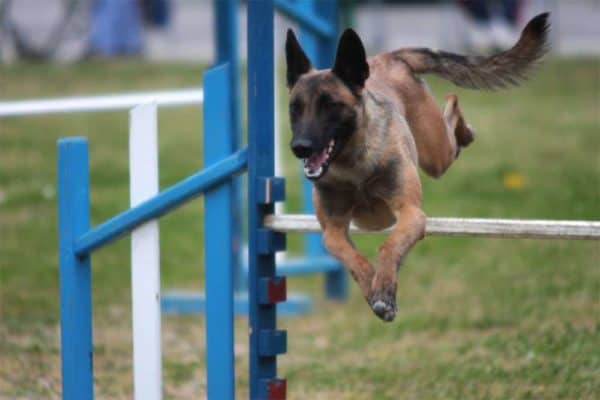How Often Do Belgian Malinois Go Into Heat: Learn Important Facts About Malinois Estrus
The Belgian Malinois is arguably the most in-demand working K-9 in the world. These regal dogs actually got their start as herding sheepdogs in their native country of Belgium.
Today, the Belgian Malinois is known around the world for its courage and poise under some of the most dangerous and difficult working conditions a dog can endure.
But underneath their stellar service in the military, police, and private security sectors, they are dogs to their core and subject to the same seasonal shifts of any other dog breed.
In this article, we talk about how often the Belgian Malinois female dog will go into heat. We also discuss what to look for and expect, when to suspect there may be something amiss and when to reach out to your dog’s veterinarian for help.
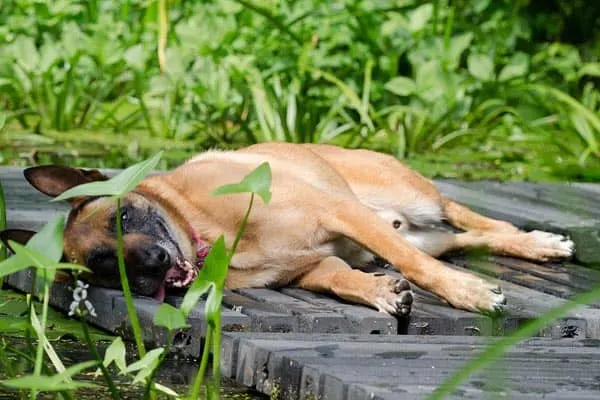
How Often Do Belgian Malinois Go Into Heat?
The Belgian Malinois typically comes into heat every six months according to VCA Animal Hospitals.
However, there can be some variance here depending on each Malinois dog’s specific genetics and health.
A dog that is in poor health may not have a heat cycle twice per year (or even once per year). And some dogs that are in excellent health may still only have one heat cycle per year.
If you are concerned about whether your Belgian Malinois is not having regular heat cycles, always reach out to your dog’s veterinarian for guidance.
Learn How to Spot Your Belgian Malinois’s First Heat Cycle
In this short and reassuring YouTube video, a master K-9 trainer explains how to identify when your Belgian Malinois is having her first heat cycle.
As the trainer points out, it is also very important to trace any blood or discharge you may see back to its source. This is vital just to be sure your dog is not injured in some way and that it is, in fact, the heat cycle producing whatever you are seeing.
When in doubt, it is always smart to reach out to your dog’s veterinarian for confirmation or an examination.
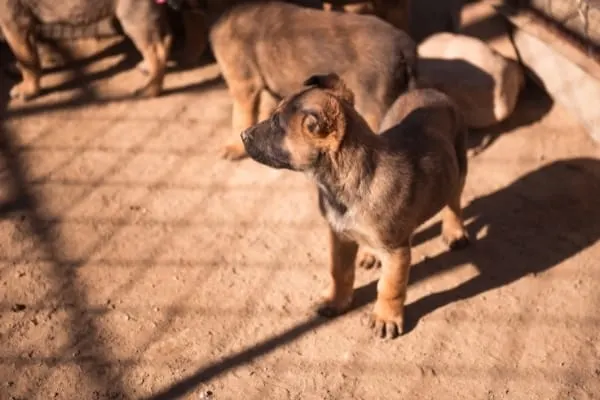
When Does a Belgian Malinois Go Into Heat?
As the American Kennel Club (AKC) explains, the dog’s breed, size, and genetics can all contribute to when and how often a dog goes into heat.
The Belgian Malinois typically weighs between 40 and 80 pounds, which places this working dog into the medium to large dog breed category.
Larger dog breeds tend to mature less quickly, which also means they can reach puberty less rapidly.
The size of your Belgian Malinois, as well as your dog’s overall health and genetics, can also influence whether your dog has her first heat cycle at six months or at nine months, or at 12 months.
If you still have not seen your Malinois go into heat for the first time by the age of one year old, you may want to have your dog’s veterinarian examine her.
Learn About the Four Stages of Belgian Malinois Heat
The Belgian Malinois, like most other purebred dog breeds, goes through four distinct stages during a typical heat cycle.
East Central Veterinary Hospital explains how only one of these four stages represents a time when the dog is actually fertile (receptive to mating and able to get pregnant).
Here is an outline of the four stages of the typical canine heat cycle.
Stage 1: Proestrus
The proestrus stage is the first stage of canine heat. This is the stage that tends to freak out new first-time female dog owners.
The reason new owners sometimes feel anxious or afraid is that suddenly their female Malinois seems to be bleeding or dripping bloody-colored discharge. The vulva may also appear to be swollen and there may be behavioral changes.
In some female dogs, there may only be a drop or two of blood while other dogs may have more visible proestrus in terms of the amount of blood or discharge.
Because the dog is not yet receptive to mating, if any male dog tries to approach her during proestrus, that dog is likely to get an aggressive response.
The average length of time for proestrus varies from 1 to 27 days, with nine being typical. However, here again, genetics and dog breed can cause variance here.
Stage 2: Estrus
Estrus is the sole stage of heat when your female Belgian Malinois will be open to (or receptive to) mating.
Estrus also lasts about nine days on average but can range anywhere from four to 24 days.
If you do not have puppies in your near-future plans, you want to make triple-sure that you keep your female Malinois closely sequestered.
Male dogs can smell female dogs in heat from miles away and can be surprisingly persistent in their mating attempts, as many a surprised owner has found out the hard way!
During the estrus stage of heat, the vulva is usually less swollen and there is less bloody discharge.
Stage 3: Diestrus
Once diestrus kicks in, the female Belgian Malinois is no longer fertile. She is also no longer interested in mating and any males who try to approach are not likely to be warmly welcomed.
This third stage of heat can last for as long as 60 days.
Diestrus can still present some swelling or bloody discharge since the dog’s body is adjusting to not getting pregnant.
Stage 4: Anestrus
Anestrus is the least eventful as well as the longest period in the female Belgian Malinois heat cycle. It can last as long as four months.
Hormone levels even out in the dog’s body. There is no swelling or discharge and no behavioral changes.
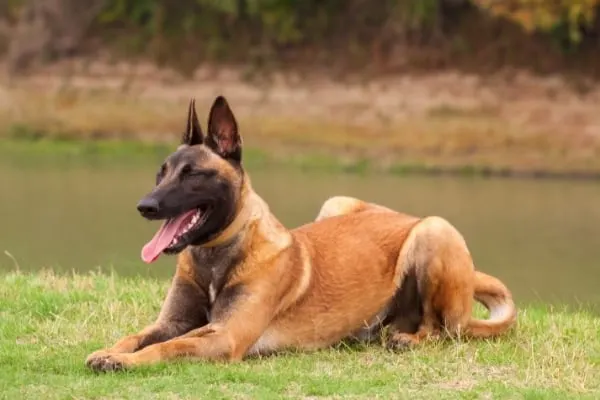
Total Length of the Belgian Malinois Heat Cycle
Looking at the total length of the Belgian Malinois heat cycle from the four stages listed above here, you can see that it just about adds up to every six to seven months.
Here is an overview of what veterinarians share about the typical canine heat cycle:
- Proestrus: one to 27 days (average of nine days)
- Estrus: four to 24 days (average of nine days)
- Diestrus: two months
- Anestrus: four months
You see the most variance in the proestrus, or readiness stage, and the estrus, or fertile stage.
In fact, when most dog owners talk about “heat,” they are really talking about proestrus and estrus.
So when you hear veterinarians or dog breeders talk about how the Belgian Malinois heat cycle typically lasts two to four weeks, it is actually just the proestrus and estrus stages they are talking about.
This is important to know or you might panic at the thought that your dog’s heat cycle is taking a whole lot longer!
Helping Your Belgian Malinois Through Her First Heat Cycle
While growing up and becoming sexually mature is something that your dog’s body will naturally go through, it may not feel so natural to your dog in other ways.
And as this eye-popping story from a first-time or “virgin” Malinois owner and member of the SoCal Belgian Malinois Rescue charity showcases, your dog’s first heat cycle might really surprise you!
You may not know at first what the reason is for changes to your dog’s demeanor, sleeping or eating habits, or interactions with you and other family pets.
Just as with human females, canine females go into heat because of internal changes in the levels of certain hormones, most notably estrogen and progesterone.
These changing hormone levels can cause the bleeding and discharge you may see as well as rapid mood and behavioral changes.
You may want to purchase some canine diapers for your dog so the discharge won’t damage your household furnishings. If your dog seems more tired or hungry than usual, always talk with your veterinarian but try to make sure she is as comfortable as possible.
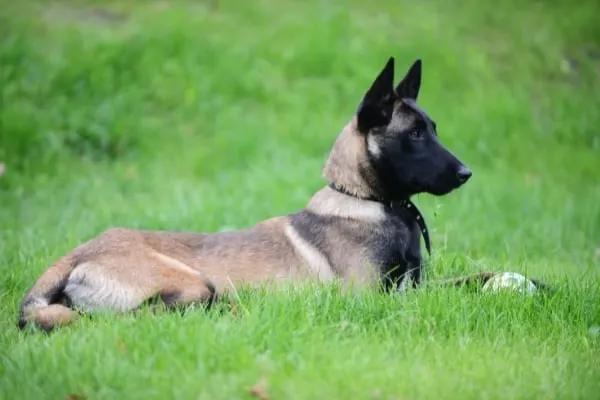
When to Breed Your Belgian Malinois Female For the First Time
If you want to breed your Belgian Malinois, it is important to wait until your dog has had at least one and perhaps two successful heat cycles before you allow her to get pregnant.
These protective measures can help avoid early-life problems like too-fast growth and irregular bone growth and later-life health problems such as tumors and cancer.
When to Spay Your Belgian Malinois Female
If you don’t plan to ever breed your female Belgian Malinois, spaying is the best way to make sure you never end up with unplanned puppies.
However, the timing of the spay surgery can be important for your dog’s adult health. As a European Belgian Malinois breeder explains, too-early spaying may cause health issues later in life.
Always talk with your dog’s breeder and veterinarian to determine the best and safest time to schedule your dog’s spay surgery.
By keeping in close contact with your dog’s breeder and canine veterinarian, you can determine the safest time period to have your Belgian Malinois spayed.














